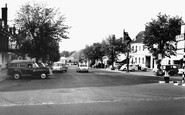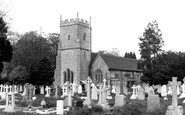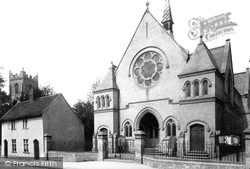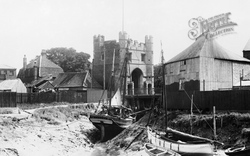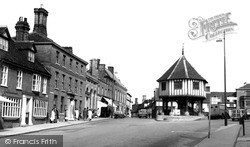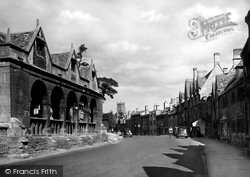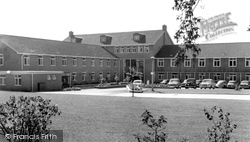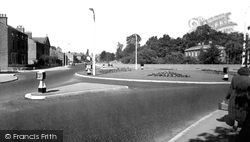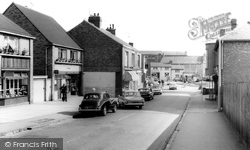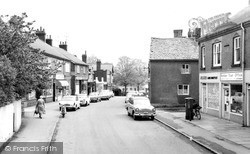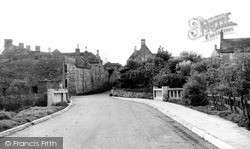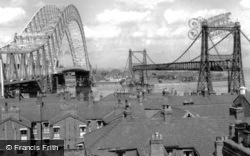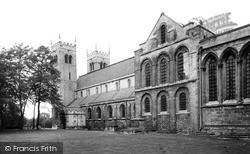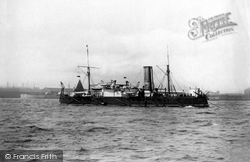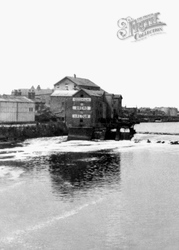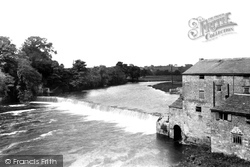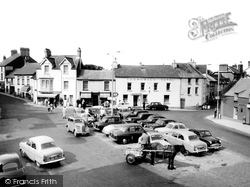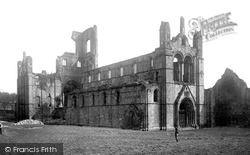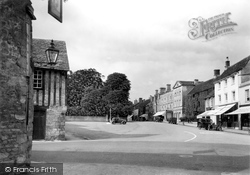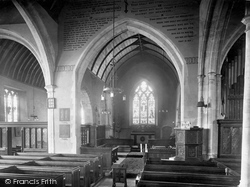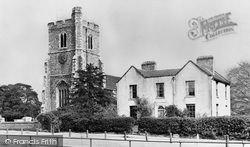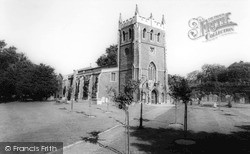Places
Sorry, no places were found that related to your search.
Photos
5 photos found. Showing results 981 to 5.
Maps
83 maps found.
Books
Sorry, no books were found that related to your search.
Memories
1,127 memories found. Showing results 491 to 500.
Born And Bred In Wortley Leeds
I was born in Wortley in 1947, went to Upper wortley School, then Silver Royd CS, then worked at Yorkshire Engineering Supplies in Upper Wortley Road. I met my husband in the Hanover Arms, Lower Wortley ...Read more
A memory of Lower Town in 1947 by
That Morris Minor Traveller Has To Be Our Dad's Car!
My family lived at No 3 (the top flat), Corner House, at the top end of Broad Street, first on the left looking at the photo (but just out of the picture) for many years from 1947 or so. I ...Read more
A memory of New Alresford in 1947 by
Paignton Was My Crucible 1947
My mother gave life to me in Paignton hospital (now a hospice I believe) in July of this year (1947) and I spent much of my early years in and around this lovely little town. Not so lovely or little now but still grand ...Read more
A memory of Paignton in 1947 by
Lindfield School Hyde End House
Lindfield School, Hyde End House, Brimpton. I would love to hear from anyone who has memories of Lindfield School, Hyde End House, Brimpton. I was there from when I was six until I was eight, between 1947 - 1949, ...Read more
A memory of Brimpton in 1947
Return Of The Native
I am now 63 but it wasn't till a couple of years ago that looking at my BC I actually took in that I was born at the Holbrook Maternity Home June 30th 1947. I'd always put down Belper as my place of birth as I'd only glanced at ...Read more
A memory of Holbrook in 1947 by
1947 To 1956
I was born in 1942 in Upton-by-Chester and my mother's family (Maddock) owned the butcher's shop that became Toycraft on Watergate Street, and one in the Market in the sixties. My parents emigrated to Canada with me in tow in 1956 and I ...Read more
A memory of Chester in 1947 by
Valerie Frith Pearce
The first time I went to Perranuthnoe (Perran) was in 1946 when the Warspite was in trouble and was wrecked at Prussia Cove, only to fine it's final resting place by the side of the Mount. In 1947 I married Richard Pearce and ...Read more
A memory of Perranuthnoe in 1947 by
Walk Along Stoneham Lane
I remember North Stoneham Church from a favourite walk my family and I used to take of a Saturday or Sunday afternoon. We set out from Kelvin Road and made our way towards Stoneham Lane with the blacksmith's shop on the ...Read more
A memory of Eastleigh in 1947 by
Childhood Memories
These memories have been contributed by Myra Greer. In 1947, when I was 7, my mother and I moved from Salisbury in Wiltshire where my father was stationed at RAF Boscombe Down, to near Llanfarian, where my grandparents had ...Read more
A memory of Llanfarian in 1947
My Young Days At Catherington
MY YOUNG DAYS AT CATHERINGTON, RANDELLS COTTAGE, LINKHORN Born in 1942 in Cornwall, my early years of school were at Clanfield. My holidays were spent at my grandmother’s house at Randells Cottage, my father was ...Read more
A memory of Catherington in 1947 by
Captions
1,233 captions found. Showing results 1,177 to 1,200.
The left door of the house to the left has become a window, the two windows have been shortened, and the Gothic arch of the other door has been removed.
Silting of the Ouse's ponderous waters robbed the town of much of its former prestige as a seaport, but its many graceful buildings and old Custom House have brought to it the appella- tion
The fine half-timbered octagonal market cross, resting on timber stilts and stone arches, was built in 1605 after a fire destroyed a good proportion of the town.
The arched building in the left foreground is the Market Hall, which was built in 1627 at the expense of Sir Baptist Hicks.
Much of this remarkable building has been demolished over the past decade to accommodate a not particularly complimentary flat conversion.
It looks much the same today, with attractive flower- beds, although it has been reduced in size to aid the flow of the traffic.
Much red brick building of the 19th century intruded into the village scene as industry spread from Leicester, including the impressive backdrop of factory buildings we see here.
The shop fronts in the left-hand row have retained much of their original quality, but Flair, the ladies' hairstylist (right), has made the alterations which were regrettably to become
This later 17th-century house is unattributed, but it does have much in common with Lyndon Hall, designed by John Sturges in 1668.
The road bridge had taken four years to build, and was very much needed by the time it opened. Sunday and holiday traffic heading to and from North Wales could take up to two hours to cross.
The half-timbered octagonal market cross, resting on timber stilts and stone arches, was built in 1605 after a fire destroyed a good proportion of the town.
The transepts with their two storeys of arches date from the 1920s and 1930s, while a modern central tower with a slender spire and a choir was erected from 1966 to 1974 by Laurence King.
In 1890 she could manage 12.2 knots, though she was much happier doing ten; but by 1895 her speed seems to have been reduced to an asthmatic 8.4 knots.
The company still occupies the mill, but the water wheel that provided so much power turned for the final time in 1973.
This new three-arch bridge was completed in 1804 at a cost of £24,864; on the central parapet are the names of the then 74-year-old architect John Carr and the builder, Bernard Hartley of Pontefract
Lord Haw Haw heard this, and broadcast that HMS 'Cabot' had been sunk - much to the amusement of the locals.
This is not so much of a square as a roundabout these days. There is no car parking today, but a busy road junction with a cannon in the centre.
This street scene has not changed very much except for the names of the occupants.
North presented the Abbey to the city, and after much restoration it was opened to the public.
The Council look after it well, and there is much to see in this fine old building.
Although very much a stone-built place, it lacks the Cotswold atmosphere of the settlements on the high wold.
The Jacobean oak pulpit of c1630 was found in the tower arch covered in white paint, and was placed in its present position during the restoration of the church in 1851.
Broxbourne's parish church of St Augustine is much larger than St Paul's.
At the Dissolution, the nave was demolished and the western arch of the tower was filled in. The people of the town bought the remains of the original building, and it then became the parish church.
Places (0)
Photos (5)
Memories (1127)
Books (0)
Maps (83)



